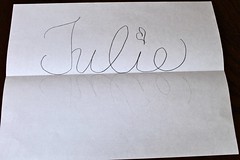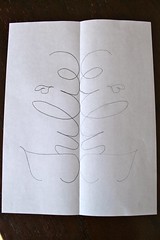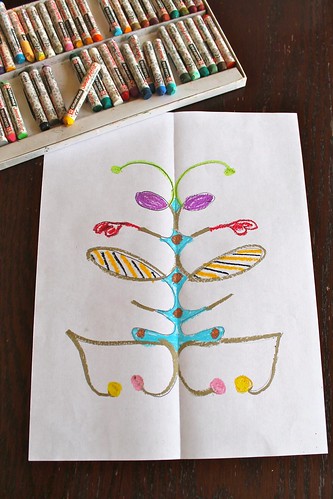3 Spectacular Strategies for Success
The expression, “Go big or go home!” might apply here (though for our purposes, “Go big AT home” would be more appropriate). However, one of the 3 Spectacular Strategies is about going really really small, as in tiny, as in minisculilio (perhaps the reframe might be: “Go so small it’s like this HUGE commitment to staying in the confines of ‘going really really tiny’—maybe like “Going Big INTO Small!”).
Let me set the context. Sometimes we homeschooling parents assemble all these Reasonable Goals for the school year. We believe in plodding along, managing our children’s progress, assessing their growth and making incremental, prudent adjustments. We divvy up the workbook into its perfectly apportioned pages-to-be-done-each-day for the 180 day school year and then, carefully, carry out the plan one-painstaking-day-at-a-time, requiring compliance from the students (our beloved cherubs), at times deviating from the Sacred Plan into a Cul-de-sac of Guilt when we unwillingly take a day off…
Then we ramp up the familiar and try again. And again. And… a… gain.
Then we hit the wall of resistance, or poor performance, or tedium, and we wonder how we can get back on track.
Sound familiar? Sound exhausting? Sound crazy-making?
Break the cycle.
Ditch the plan… for these 3 strategies.
1. Go BIG!!
You want to study the Gold Rush? BUILD your own gold mining sluice from scratch for the next week. Or next two weeks. Get the wood, find a design, order some fool’s gold from an online store, grab a hammer and nails, saw and saw horses, and put the thing together. For the whole two weeks. No grammar lessons. No math pages. No phonics. Just pure bigtime indulgence throwing educational caution (and the nagging voice of the Ghost-of-Public-School-Past) to the wind!
Don’t worry if you fail at sluice-building (half the time you go big, you will). So much learning happens in the process of a failed sluice project! You can always shift gears and bury the fool’s gold in your sandbox. Add water and use pie tins to swish the gold into view.
Invite friends to help find gold. Sing “O Susanna.” Eat sugared beans with hot dogs. Make sarsaparilla from scratch. Wear Levi’s and flannel shirts. Pin the gold nugget on a map of Sutter’s Creek!
Ditch the plodding text book study. Stop the labor of daily grind learning. Instead when you come across a worthy topic, Go Big!
Other examples of Going Big (all at once, all hands on deck, all in, no other competing subjects):
- Colonial Times: Dye fabric with beets, onion skins, and paprika. Dip candles. Make cardboard stocks and pose in them. Sing “Yankee Doodle.” Assemble colored paper flags and stick a circle of silver or white stars to represent the colonies on the flag. Write letters on parchment with fountain pens and seal them with sealing wax.
- Birds: Observe them. Get a field guide and binoculars; identify them. Go to places where birds are (nature centers, woods, beaches, the zoo). Take a birding walk with a local birding group. Name the birds that come to your backyard. Feed them. Draw them. Photograph them. Get a raw chicken and observe and name all the parts as you manipulate the body. Identify where the feathers attached themselves. Show the innards. Discuss. Dissect an owl pellet. Collect feathers. Watch Youtube videos of eggs hatching. Watch “Winged Migration” (the film).
- Cursive handwriting: Make a bug using your cursive handwriting. Take a white sheet of paper, fold it lengthwise in half, turn it sideways so the middle of the page is the line you write on. Handwrite (in soft pencil led) your first name (use italics for letters that ordinarily go below the line in cursive). Fold the page back together and rub until the mirror impression shows on the flip side. Open the page. Trace over the mirrored impression of the name so it stands out. Color the “name” to look like a bug! Try other words and make more bugs. Cut them out and mount them on the kitchen windows. (See photos for the process.)
2. Go Really Really Small
The temptation is to do more, better, and different all the time. But what if you flip the script? Choose deliberately to do only one tiny part of the lesson today. Call this event: “The Mini Lesson.” It could become a “thing” you go to when kids are exhausted and you need to change the tone of the home. You might yell: “Time for a Mini Lesson!”
For instance, what if you choose to require the barest minimum-est amount of the required “thing”? What if you told your kids:
“You only have to do one math problem today, but I want to see you get the right answer. You can spend as much or as little time as you need. Just be sure you get the answer right. If you do, there’s a surprise for you. Yes, you can ask me for help or to check as you go and I’ll hint at the errors for you to fix.”
Then offer your child one problem that uses the math concepts you want to emphasize. For instance, if you are working with addition and subtraction, create a problem that uses both: (7+6) — (5+1) = ? You can certainly make the problem more or less complex depending on the skill you want to teach. It might be a perfect time to do ONE word problem.
Create a meaningful really little reward:
-
a pack of gum,
a tin of mints,
a row of stickers,
a rub-on tattoo,
a new pencil,
lip balm,
two cookies,
a bouncy ball,
a mini Slinky.
Naturally, you can use the same really really small lesson with handwriting: One letter, one time (perfect, beautiful, clear, proportioned, accurate). Or one word, or one sentence. Give full attention to perfectly shaped letters. Expect accurate copying, correct letter-to-letter correspondence. Keep the selection short. Admire it when it’s complete.
Apply the really really small lesson to a household practice:
Set the timer for one minute. Pick up toys on the floor for a single minute, in a race, to get as many off the ground as possible. Do it twice that day… Once in the morning and once in the afternoon. You can yell “Ready set go!” and “Ding! You’re done.” Make it a community challenge: “If the whole floor gets cleared, we all get gum!”
A really really small lesson can be a single sentence that needs editing (a mini mini version of the Reverse Dictation practice in the Arrow, Boomerang, and The Writer’s Jungle).
A really really small lesson could be one logic puzzle, or one fact memorized, or one page of a book read aloud. Pick the item you are worried about, pick one short requirement, and use this mini lesson format to give it square, deep, brief attention.
3. Collaborate
Why go it alone? Put your kids together in pairs. Have the older teach the younger. Capitalize on the elder children’s maturity and advanced skills. The principle that applies: “You learn more when you teach!”
If one child needs to drill multiplication tables, send the one who knows them outdoors with the one learning them. Give them a frisbee and tell the older one to call out “3 times 4,” and the other will toss it back: 12!
Have a younger child read aloud to an older child as she learns to read.
Ask a younger and older child to bake together. Empower an older sibling to teach a younger sibling to:
-
use the washing machine,
tie shoes,
tell time,
hopscotch,
find the main idea in a paragraph,
identify the hero and the villain in a movie,
put together a puzzle,
work a page of sentences in Winston Grammar,
create a list of homonyms,
memorize a nursery rhyme or small poem…
The point is—have your kids do stuff together, with the bigger kids in the role of teacher or leader.
As a collaborating family, you can create a slew of ideas together to make history come to life, for example. Each child contributes an idea and then you all do them as a family, one at a time, until they are completed. For instance, if you study a country like Japan, you might have several ideas created by the kids:
- Craft tissue paper cherry blossoms
- Make a felt Japanese flag
- Eat tempura with chopsticks
- Sit on the floor with cushions to eat the meal at a coffee table
- Draw a map of Japan
- Learn Japanese greetings, including how to bow
- Watch anime!
- Perform a Japanese tea ceremony
Not all ideas have to come from you! On the contrary, kids love knowing that they made a meaningful contribution to the project. Don’t rule out the weird ideas—”I want to see a Komodo Dragon!” Find out where one lives (at a zoo?) and go to it. Or at the least, find a documentary to watch together to learn about the creature. Giving each person something to contribute helps the whole team to feel invested. Learning will happen for each person in a grade appropriate way, according to their skills. That’s what you want!
Lastly, you can add families to your projects any time you feel lonely. Two families creating a henna party to celebrate “1001 Arabian Nights” is much more fun than one! Studying tide pools with your best friends at the beach for a picnic is better than going alone. You get the idea.
To review:
Go Big!
Go really really small…
~Collaborate~
Tell me how it goes (or has gone, if you already live this way).





















Oh, this is such an apposite blog post because this is just what I have been doing recently. The boys were baulking at copywork. Instead of copying out a whole paragraph, I asked them to choose one word only from our current read-aloud, and write it on an A4 piece of paper and decorate it. One son chose the name of the main character; the other son chose ‘Darkness’ (a key theme in the first chapter). This week we are doing the same but with the restriction that the word has to have three syllables or more.
I’m also feeling that we are not doing enough maths, and that I want to make our maths practice more creative. So tomorrow, after chores and exercise, we are spending the whole day on maths. I’ve devised several options which include working out how casinos make money, thinking about how many packets of trading cards they have to buy to get a ‘super rare’ one, or designing a quilt with tessellating shapes. I’m feeling very excited about tomorrow and I hope the boys will, too.
I keep receiving a javascript error popup when I attempt submitting a comment.
Does this occur for anyone else? I don’t exactly have the most up to date pc so possibly that’s the problem.